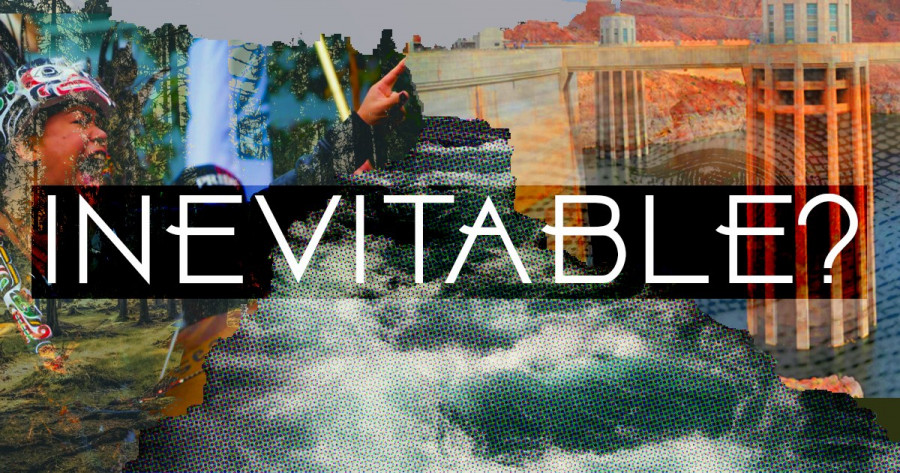The Hydroelectric Crises: The Fight to Live in the North
A People’s History of Canada Column
The pipeline push backs of today aren’t isolated in Quebec history.
For First Nations peoples, living on their ancestral lands has been a challenge. For centuries, they have been snubbed, in one way or the other, by North American governments.
In its 400 year history, Quebec has not been any different in that regard. This includes the exploitation of resources on unceded Indigenous territory, which still today is an important and current point of contention for First Nations peoples. Here and across North America, projects like the Transcanada Energy East pipeline, the Keystone XL pipeline, and the Northern Gateway projects have attracted the ire of First Nation peoples and other communities alike.
In Quebec, the exploitation of resources goes deeper than pipelines, and much farther than the Plan Nord. The desire to exploit the resources found in the north of the province first came with timber in the early 1800s, as the British no longer had access to the giant forests of the Baltic during the Napoleonic wars. Then came the gold rushes of the late 19th and early 20th century in Beauce and Rouyn-Noranda, then iron, copper, and asbestos mining to fuel both World Wars.
In that same time period, Quebec fell in love with hydroelectricity, with the first dam being built on the Montmorency Falls to power Québec City in 1885. From then, private enterprises were in charge of hydroelectricity until it began a process of nationalisation in 1944.
Hydroelectricity itself is technically a clean, renewable source of energy. After being built, dams produce little pollution and produce a lot electricity for little cost. This enables Hydro-Québec to sell out all the excess to New England to keep the lights on.
Hydroelectric dams, however, are not without fault. The major ecological strain they cause doesn’t come in after they are built but rather before and during construction. First, dams require large amounts of flooding to fill reservoirs upstream from the dam to ensure continuous water flow. This flooding also requires the displacement and repopulation of areas where the dam is built.
Continuing on the path it had undertaken since the mid-1940s, Hydro-Québec and the government of Quebec under Robert Bourassa started the James Development Corporation in 1971 to develop the exploitation of mines, forestry and hydroelectric power, called the James Bay Project.
Their first project was to build giant dams on La Grande Rivière. The first phase of the project cost $13.7 billion. It required the diversion of water from the Eastmain, Opinaca, and Caniapiscau rivers to dammed reservoirs on La Grande Rivière. This would increase the average flow of La Grande Rivière from 1,700 to 3,300 m3/s to maximise electrical output.
The government group, overzealous and chomping at the bit to grow its hydroelectric development even further, simply started to set up shop wherever they wanted dams, without notifying the First Nations populations living there. Large portions of Cree and Inuit territory were destined to be flooded.
The Indigenous peoples who lived there were in an uproar, and in 1972 sought an injunction from the Supreme Court of Quebec to temporarily stop the James Bay project. It was granted in 1973, then overturned in the Quebec Court of Appeal a week later. The judgement stated that public interest takes precedence over the interests of a minority.
The Cree nations responded by forming their first political body, the Grand Council of the Crees. The council, along with Inuit populations, began negotiations with the provincial and federal governments. This led to the 1975 James Bay and Northern Quebec Agreement, where the GCC and the Northern Quebec Inuit Association (and later the Naskapi in 1978) reached a deal with the provincial government: territory would be separated as lands reserved to the First Nations, land owned by Quebec but where they retained hunting and fishing rights as well as the shared authority on resource development, and lands where they only have hunting and fishing rights. The La Grande-1 dam was to be built 50 km further from the Cree Village of Chisasibi than originally planned.
The government was also mandated to accept the existence of local Inuit governments in villages, create school boards where the instruction of their languages was highly encouraged, create environmental committees that would oversee development projects and judge whether they would be too harmful or not, and finally they would help subsidize and finance local healthcare in the North.
Though the agreement led to a payout to the Cree and Inuit populations which eventually totalled $600 million with later payments, these communities had to sign away some of their territory in the process to keep hunting and fishing rights. There was an influx of outsiders into the area due to the project, and the Indigenous peoples’ way of life was forever changed.
With an agreement in place, the project was given the green light to continue. With it came the flooding of 11,500 square kilometers of land, which lead to the drowning of 10,000 caribou and mercury poisoning of local water, which in turn poisoned local fish.
Phase 1 of the project was completed in the mid-1980s. Phase 2, starting in 1989 brought the construction of five secondary power plants on La Grande Rivière. As the first phase ran along smoothly, the Quebec government, again under Robert Bourassa who had been elected for a second term in 1985, decided to grow the project even more. They set their eyes on the Great Whale River, where they planned to build even more dams on this and other surrounding rivers.
This time, the Cree and Inuit pushed back even further against these exploitation projects. In a famous move, Grand Chief Matthew Coon Come organised an elder canoe trip from the Hudson Bay to the Hudson River in Albany, New York in 1988, resulting in international attention on the issue as well as pressure on the Quebec government from international ecological groups to kill the project.
Four per cent of the hunting and fishing grounds agreed upon in the 1975 agreement had been destroyed by rising water from the dams by 1990. Poverty and social problems remained rampant since the effects of the first phase of the James Bay project, too, and there were now many from outside the region that had taken up sport hunting on the reserved lands.
The state of New York, one of the main buyers of Hydro-Québec’s surplus energy, was facing mounting backlash from within and from abroad to cancel a multi-billion dollar power purchasing deal with the state corporation. Public outcry became so important that they did just that in 1992. Now faced with a surplus in energy, and an expensive and unpopular project waiting to be built, newly elected Quebec Premier Jacques Parizeau and Hydro-Québec suspended the project indefinitely in 1994.
Quebec would later attempt to mend relations with the First Nations by signing the ‘’Paix des Braves’’ in 2002, ending decades of court battles and public outcries between the two groups.
While the 1975 agreement may not have been the bridge that would mend the relationship between First Nations and government, and the cancelling of the project on the Great Whale River did not mean the end of resource exploitation in the North, these agreements do show that with enough fighting, and pressure against projects that would be harmful both to the environment and to the nearby inhabitants, industrial projects can be altered to be less harmful or even stopped altogether.
So if anyone ever thinks the anti-pipeline demonstrations and the public outcry against these projects are out of the ordinary and that these projects are simply inevitable, it’s important to think back to these massive projects that were successfully altered, and that these fights against pipelines are very much winnable ones.


_600_832_s.png)


_600_375_90_s_c1.jpg)
